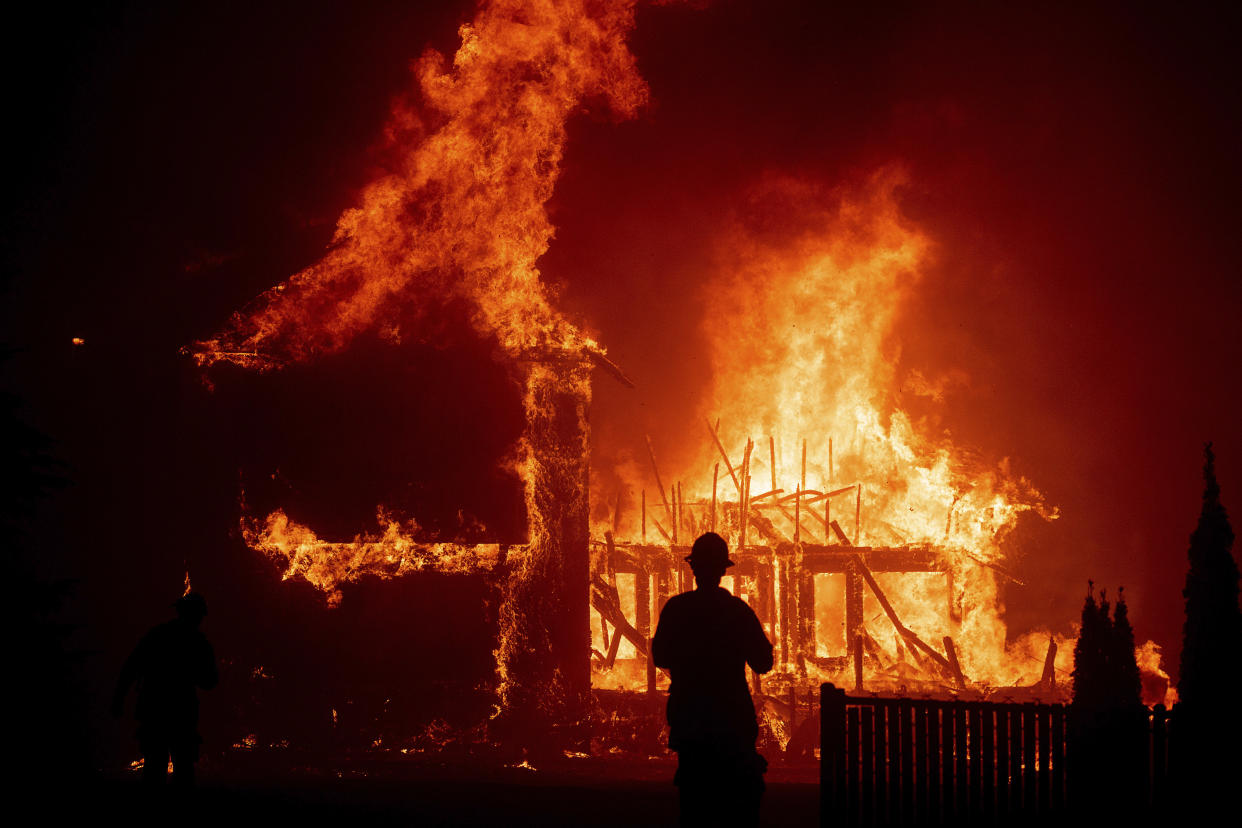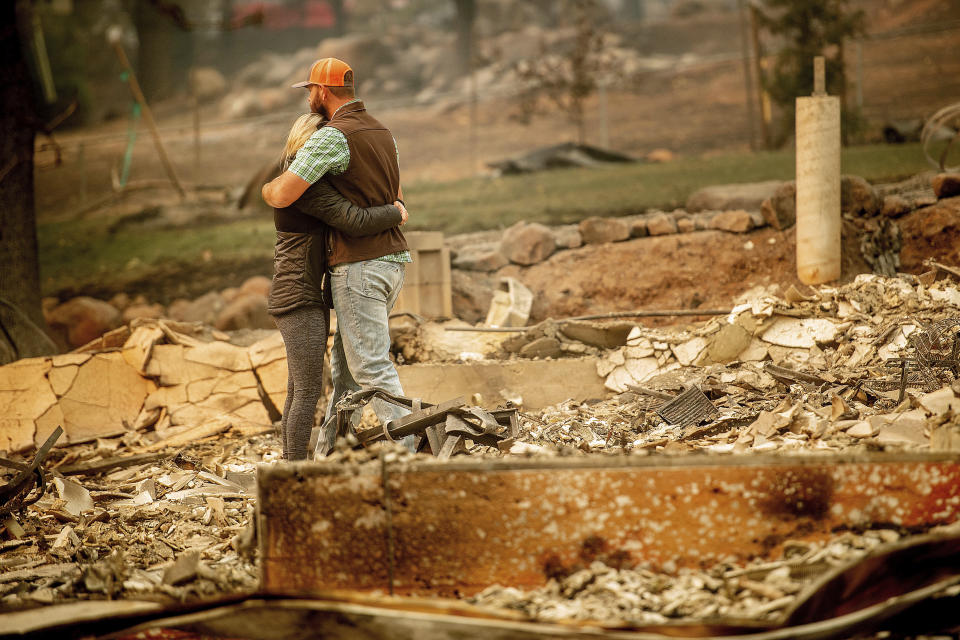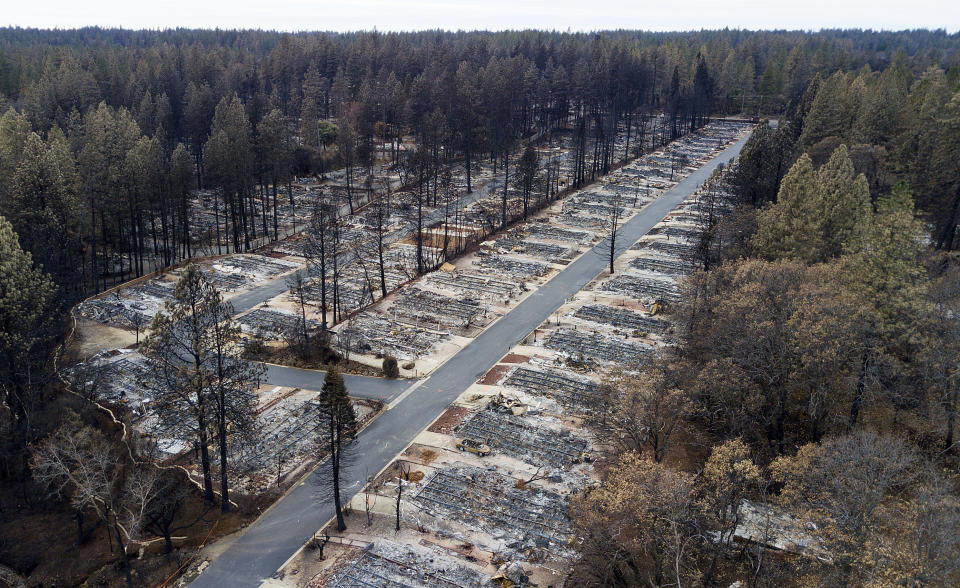Wildfire warning: In shutdown, workers fall behind on prep for fire season

As the record-setting partial federal shutdown continues, forestry experts worry that furloughing thousands of government workers could exacerbate this year’s wildfire season.
Lenya Quinn-Davidson, who serves as the area fire adviser for the University of California Cooperative Extension, told Yahoo News that right now workers who would normally be clearing out areas of potential fuel aren’t in the field, raising the risk of devastating fires later in the year. Tactics like controlled burns and forest thinning have worked in years past to reduce the severity of fires and limit their size. But with federal workers idled, those projects are languishing, and likely won’t be completed before fire season which typically begins in April in California.
“We know if they are able to get those projects accomplished we see positive benefits during wildfires,” said Quinn-Davidson.
2018 was one of the worst ever for California wildfires, with nearly 2 million acres burned. November’s Camp Fire was the deadliest in the state’s history, killing 86 people and destroying 14,000 homes. There are also concerns that areas where fire season starts earlier — in the Southeast and Southwest — could face greater than usual dangers, putting the potential trouble spots in areas ranging from Redwoods National Forest in Northern California to the pine forests of Florida.
Federal agencies manage 19 million acres of forest in California, but due to the shutdown no one at the National Forest Service was available to relay the exact number of employees furloughed nor the numbers of acres that weren’t being cleared due to the shutdown. (An estimate from the Senate Appropriations Committee projected that 80 percent of the NFS’s workforce, of 28,800 people, would be furloughed.) The agency’s home page did display a Dec. 14 story on the importance of “fighting fire with fuel clearance.”
President Trump has been critical of California’s fire management, tweeting on Jan. 9, “Billions of dollars are sent to the State of California for Forest fires that, with proper Forest Management, would never happen. Unless they get their act together, which is unlikely, I have ordered FEMA to send no more money. It is a disgraceful situation in lives & money!”

Nick Goulette, the executive director for the Watershed Research & Training Center in Northern California, said that time-sensitive projects are already being missed. The Forest Service was planning to clear hazard trees left behind from last summer’s Carr and Delta fires, selling the trees to local mills to offset the cost. But the value of the standing deadwood declines with time.
“Losing even a month in time in that planning could mean the difference between those trees having value and costing the taxpayer money to remove,” said Goulette. “In the case that the government doesn’t open, they don’t get the environmental planning done in time, it’s possible the hazard just doesn’t get mitigated if it’s going to cost the government money. They’ll be a public safety hazard that will eventually create costs for the taxpayer – eventually, there’s a reckoning.”
Experts said that in addition to failing to clear out fuel areas that could lead to fires later this year, there are just the logistical complications of falling behind on planning for weeks (or potentially months if the shutdown drags out) and coming back to a crunch of work. This is also hiring season for the Forest Service, Bureau of Land Management and the National Park Service, and a continuing shutdown means that crews won’t be able to get hired and trained.
“Every year they do this huge workforce expansion during this time of year,” said Goulette. “It’s seasonal: They train in the winter and spring, they fight fire in the summer and they’re laid off for a period of time in the winter. That period of time is ending, and it’s time to get back to that training regimen. If this stretches another month and there are no exceptions made for them as emergency personnel or essential personnel, then the problems start to compound.”

While the federal shutdown stretches through its fourth week with no end in sight, state officials are preparing. Tiffany Davila, the public affairs officer for Arizona’s Department of Forestry and Fire Management, said a few employees have missed out on federal training but that the state training and fuel burning on state land has continued unimpeded. They’re in contact with the skeleton crew of federal employees monitoring national forests and tribal land in the area.
“If there’s a fire on federal lands, we’ll call their dispatch and ask, ‘Do you guys need assistance and firefighters? We can send crews out there,’” said Davila. “Kind of no different right now, but luckily it’s our slow time so we’re working on fuel projects. They do have some people working, it’s just not that full staff we’re used to seeing every day.”
Davila said there’s been a lot of moisture over the winter and there hasn’t been fire activity, but she expects that if there were a major fire on federal land then more furloughed employees would be brought in to help handle it.
Although work was done prior to the furlough to clear out fuel-heavy areas and nonfederal groups are doing their best during the shutdown, Goulette said that there’s no way to make up for the lost time.
“Every year we get further behind on burning piles and broadcast burning, even without a shutdown,” said Goulette. “We can do the chainsaw work and the machine work faster than we can find the windows of opportunity to do the disposal and the burning part of this, so every lost opportunity and every missed window to get burning done just expands the backlog and there’s no making it up.”
“I worry it’s going to delay the federal agencies in bringing on their fire crews, and given every year we’re seeing fire season get a little longer and move a little earlier in the spring, that could really cause a problem,” said Quinn-Davidson.
_____
Read more from Yahoo News:



